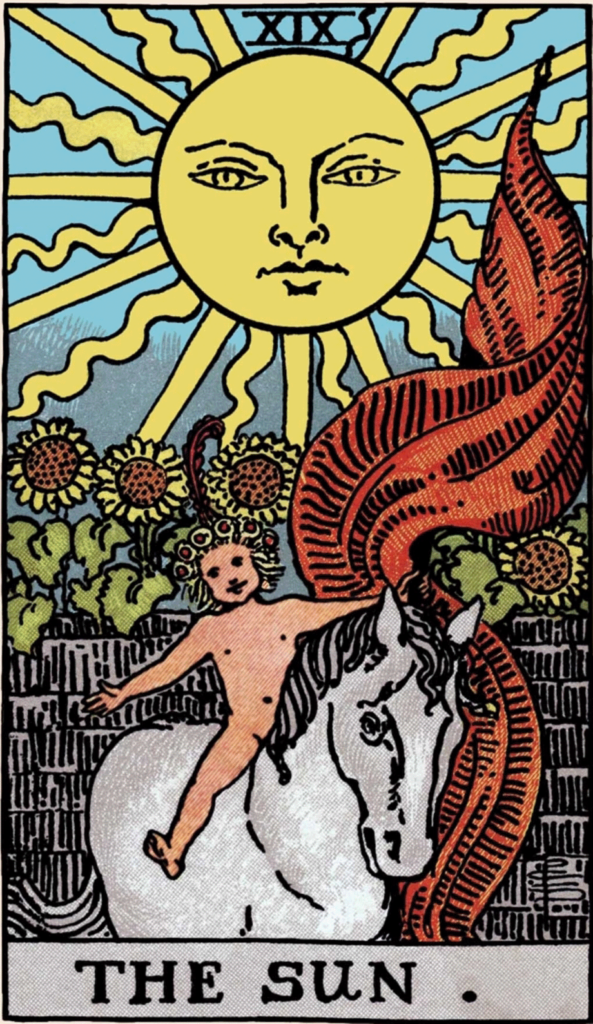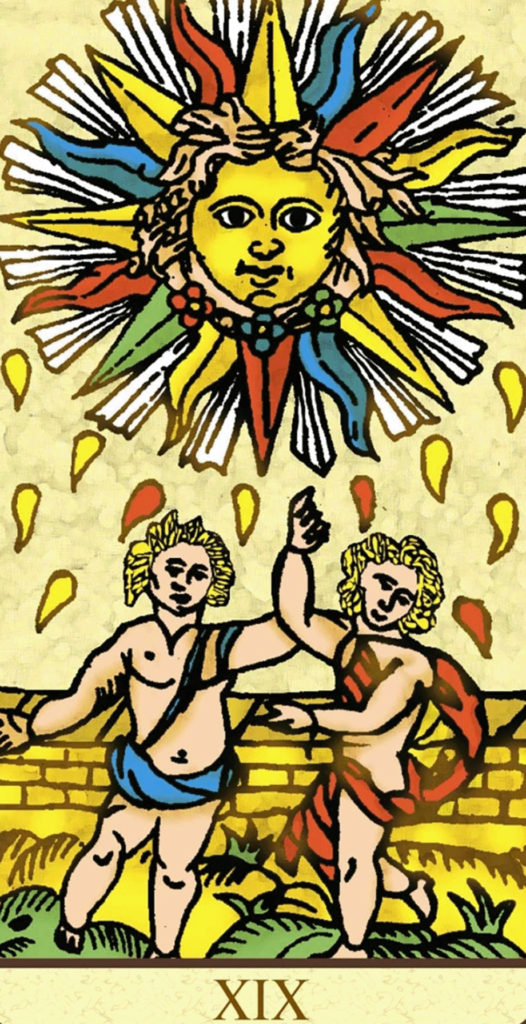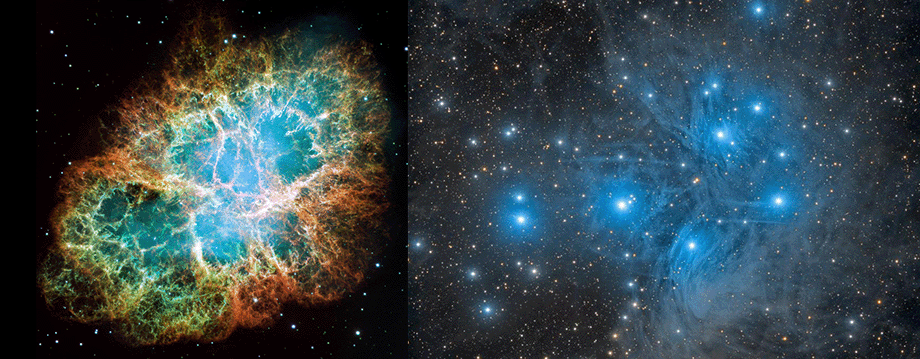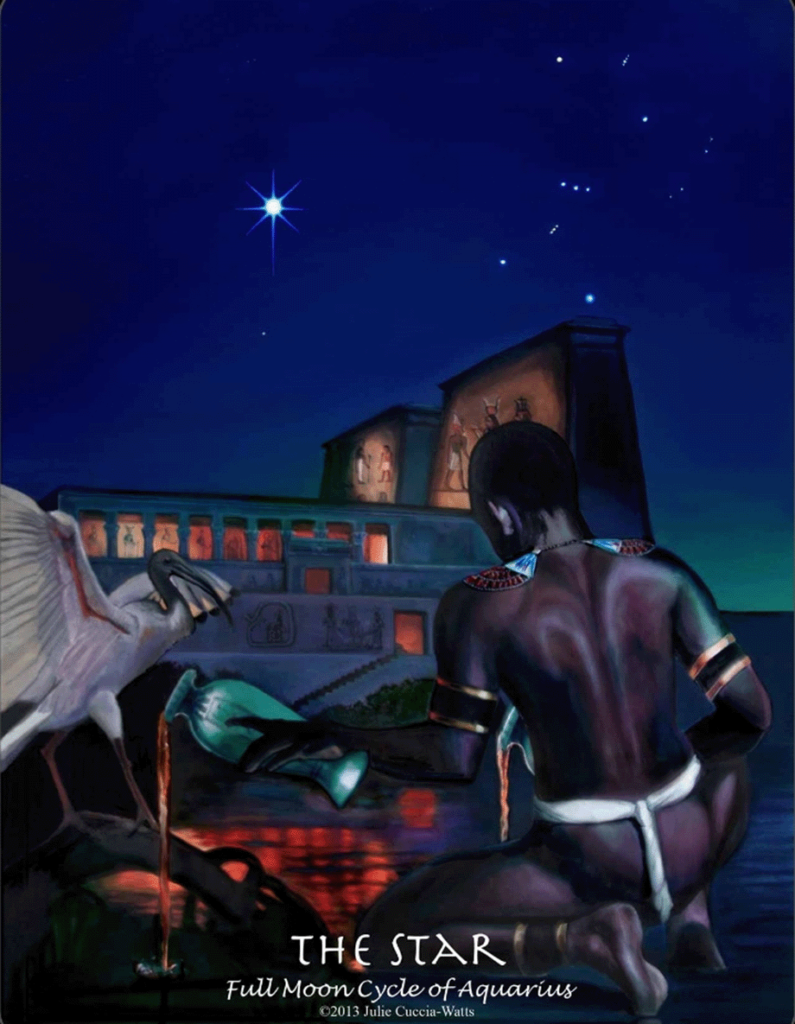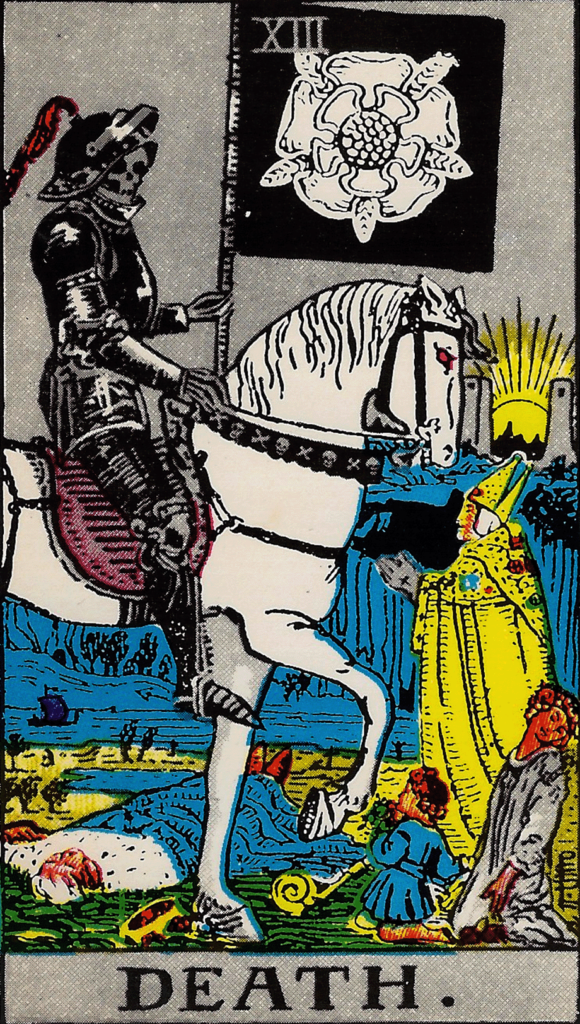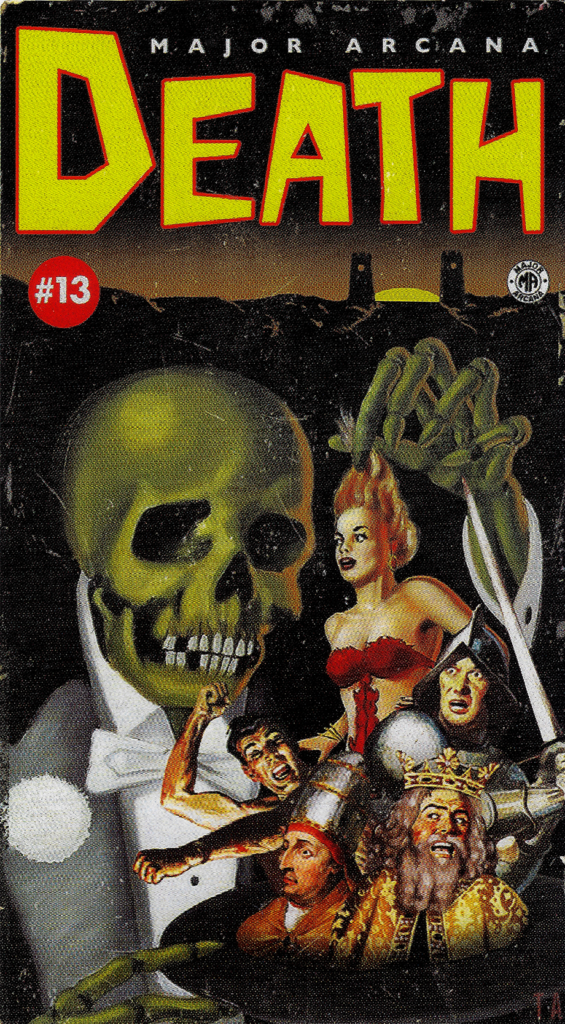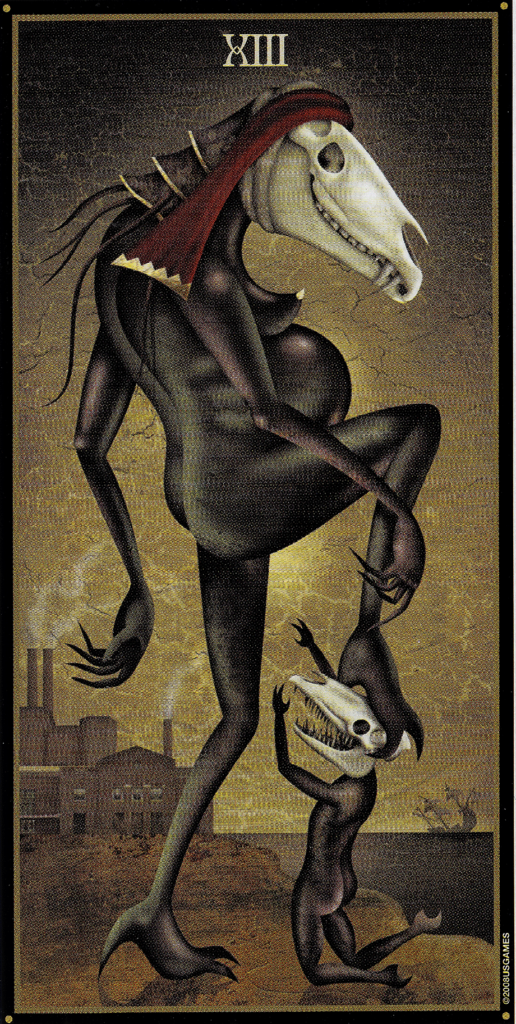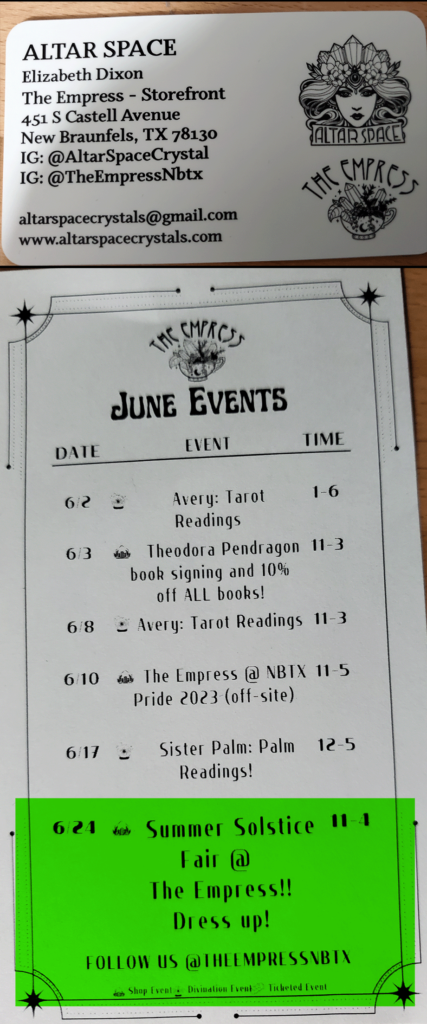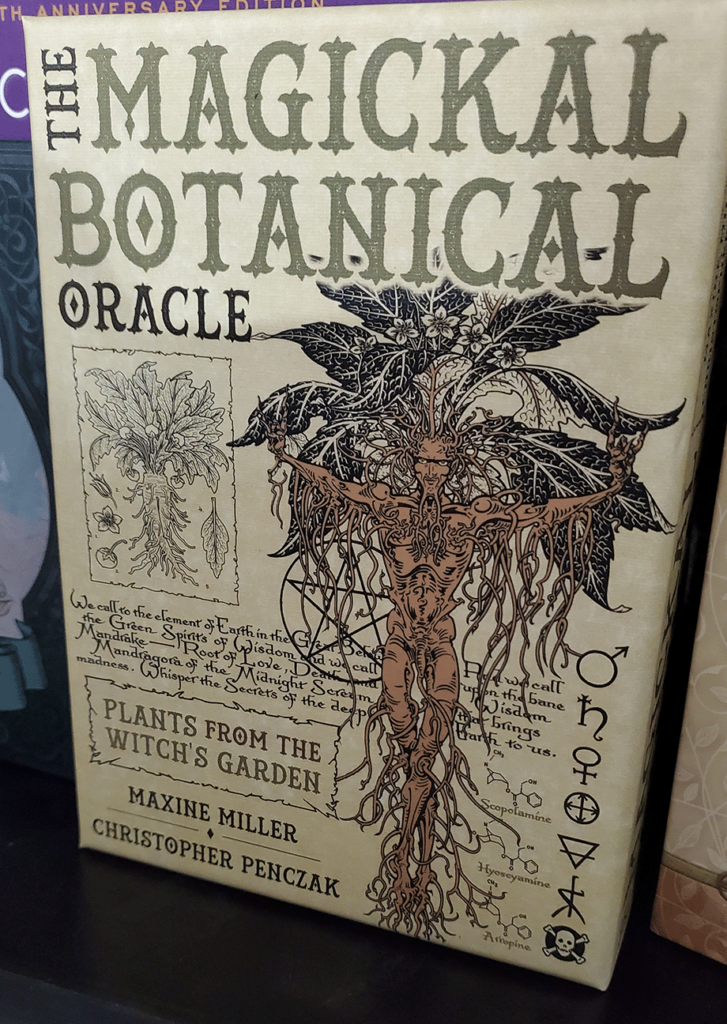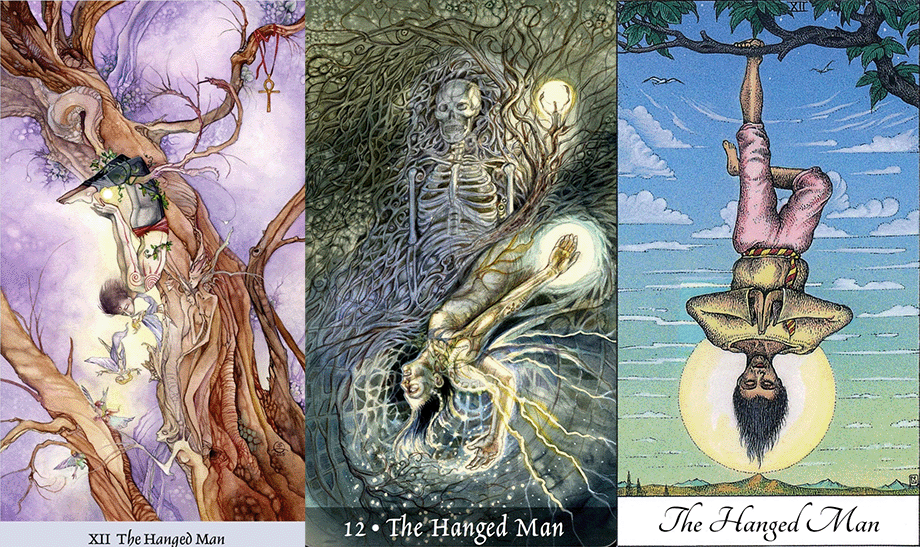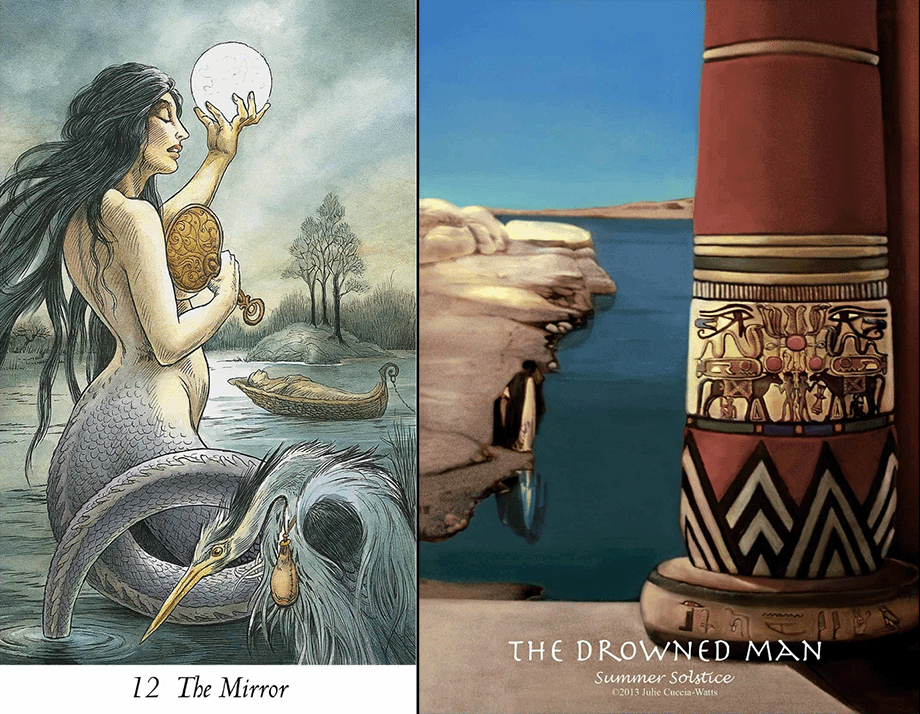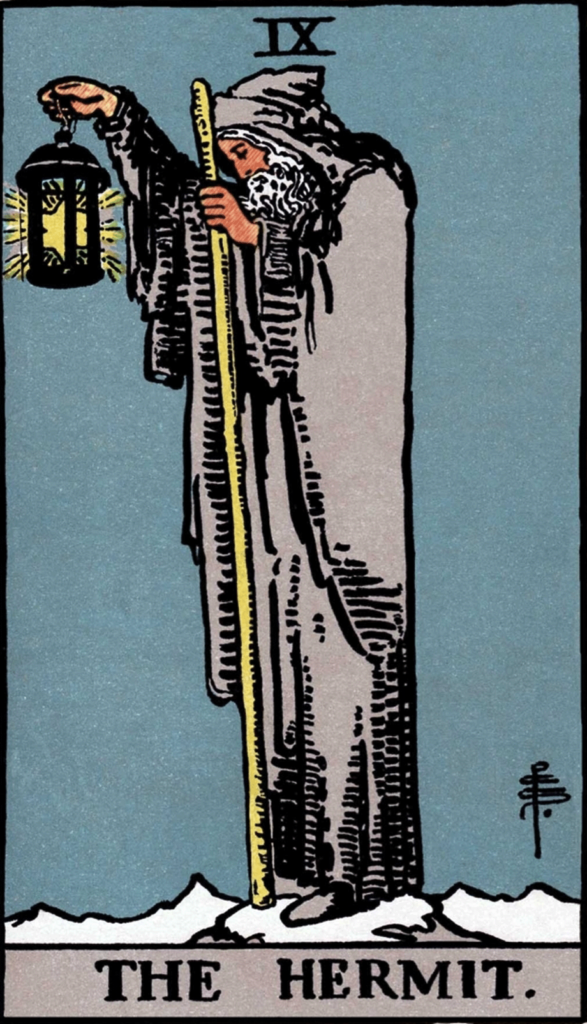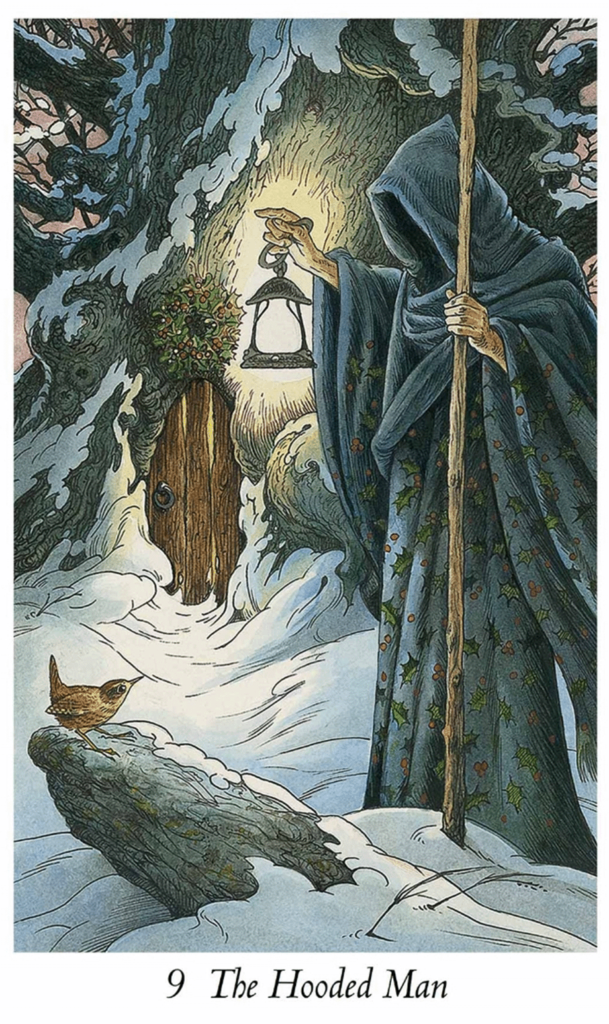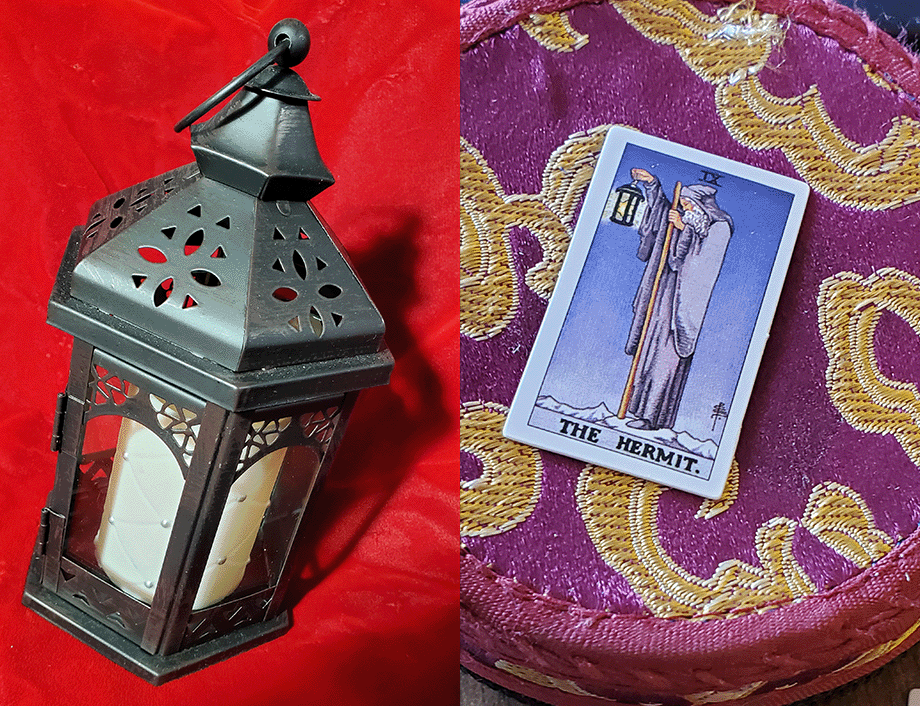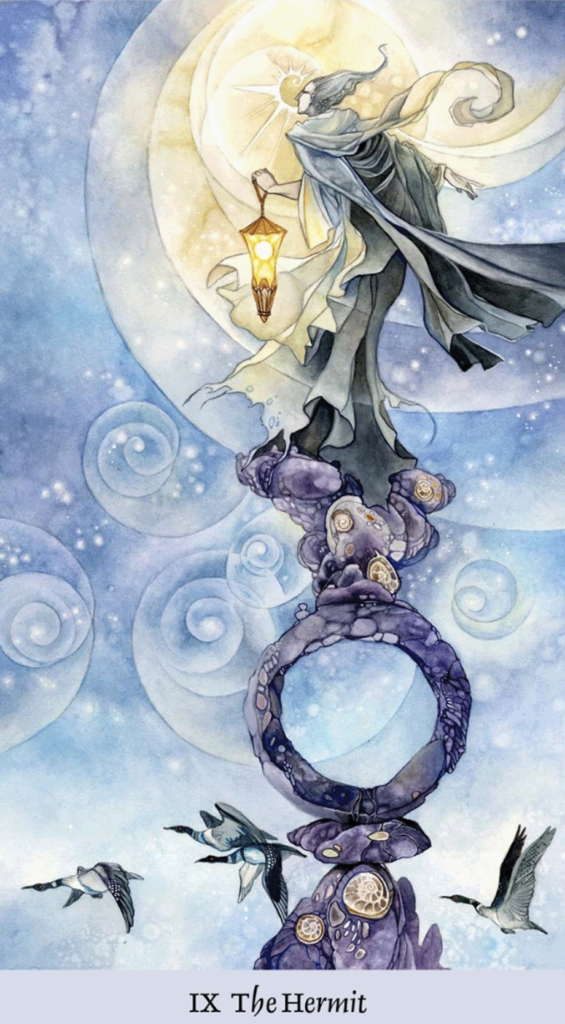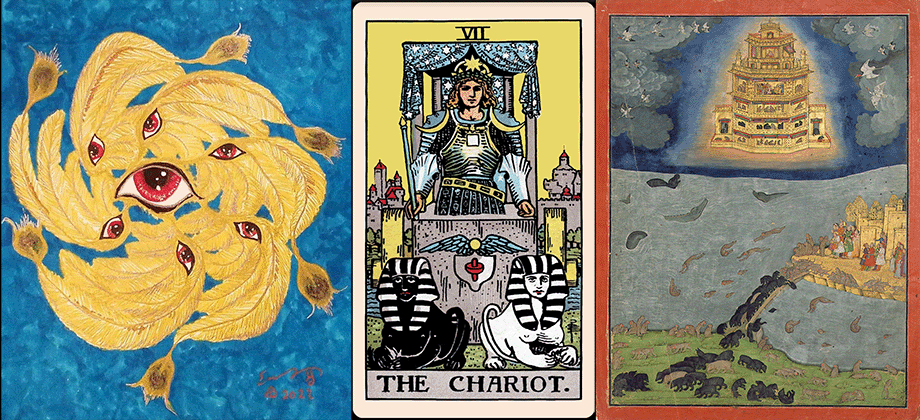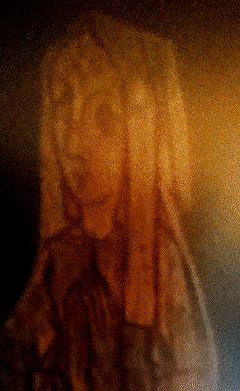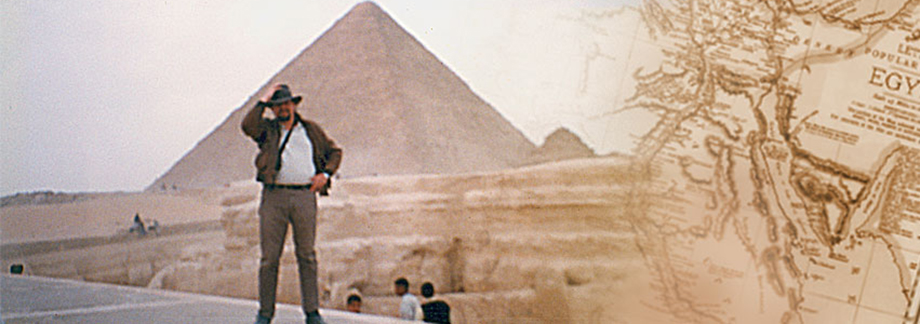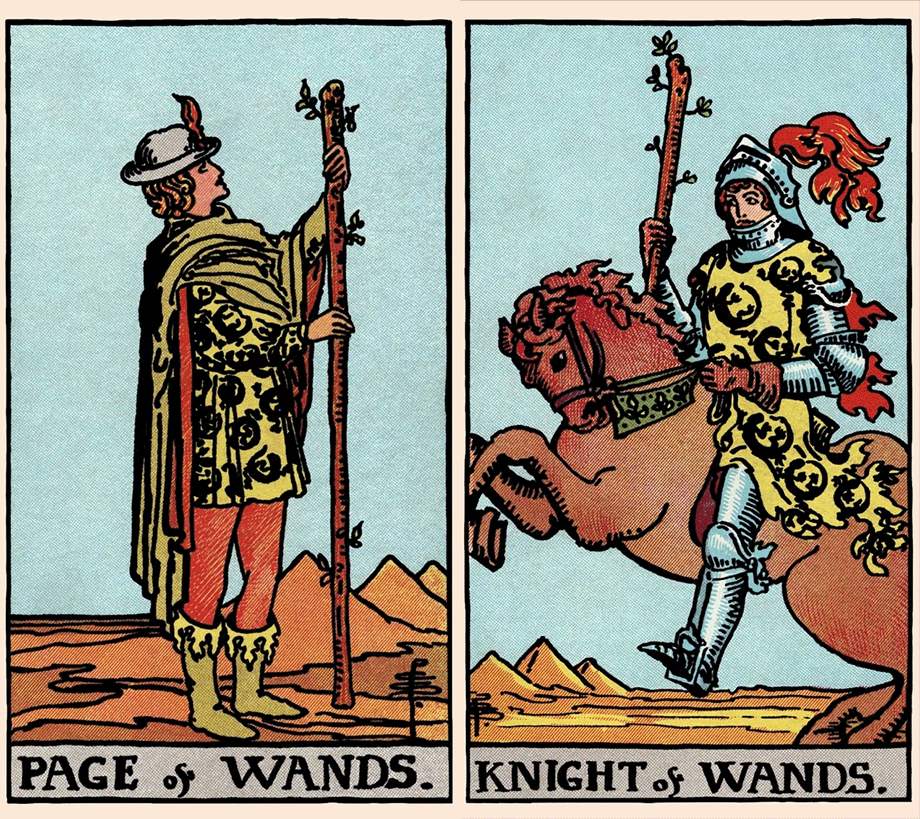Ray, did it ever occur to you that the reason we’ve been so busy lately is that the dead really are rising from their graves?
Winston Zeddemore (Ernie Husdon) – Ghostbusters
As we reach the penultimate Major Arcana card, we are confronted once again with the blatantly Christian origin of the Rider-Waite-Smith Tarot deck. The iconography on Card XX – Judgement has no other esoteric precedent. And yet, it’s possible to work around that if we spend a little time shifting the perspective.
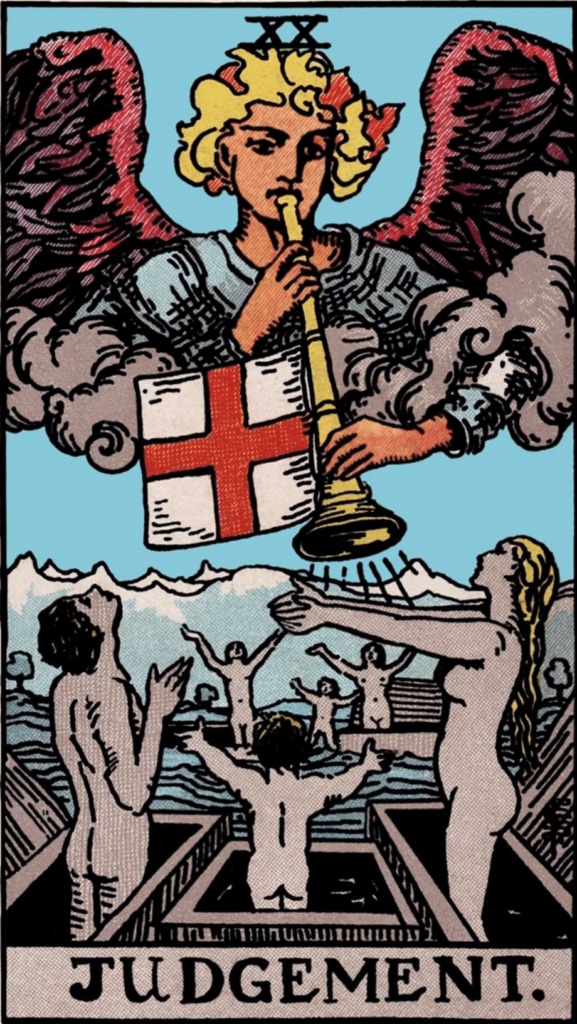
The card shows an Archangel with flaming hair appearing over a cloud. The Archangel wears armor, and is sounding a trumpet, which bears a white banner marked with a red tau cross. On the ground below, with a white mountain range in the background, we see a six nude persons standing in boxes. The lids of the boxes are cast aside. Two of the figures are male, two are female, and two are children of undetermined gender. Between the male-child-female group in the foreground and the male-child-female group in the background is a river or other body of water. in the far background there are rolling hills and three trees may be seen. The colors in the lower part of the card are muted. The figures are the same grey as the boxes they inhabit. The landscape and river are a grey blue. Above the sky is a bright blue, but the strongest colors in the image are with the Archangel and its trumpet.
The majority of this imagery is derived from the Book Of The Revelation of John of Patmos. It is the last book in the official Christian Bible, King James Version, which was a dominant source of Protestant thinking for about 500 years. There are a number of other citations in the KJV regarding the physical resurrection of the dead at the end of the world. And there are similarly multiple references to angels with trumpets. But this idea of the judging of the dead alongside the apocalyptic imagery is primarily in Revelations.
As someone raised in a Christian community, Revelations was one of the more interesting texts. Aside from Genesis and Exodus, it contains most of the “special effects”. Yes, there are a number of miracles that occur to prophets and saints and Christ, but the big epic blockbuster stuff is saved for the last book.
Most modern thinking suggests that Revelations is at least partially a veiled political attack on the Roman state and its treatment of the nascent Christian church, particularly under Nero and his successors. The “Beast with Seven Heads” and the the “Whore of Babylon” are metaphors for Rome, and for it’s imperial influence in the world. They are, perhaps, wishful thinking on the part of John (if John of Patmos was a single author) that Rome would shortly fall and be punished and revenged upon for the persecution of Christians.
On the other hand, the earlier parts about the Book of Seven Seals and the Angels with the Seven Trumpets are a remarkably interesting description of either an asteroid impact, or a nuclear war. Stars falling as flaming hail and a great star plunging into the sea and causing massive death and destruction, followed by a period of global darkening, is exactly the kind of scenario scientists describe as the aftermath of an asteroid. Consequently, it also is a dead ringer for nuclear winter. To the extent this is legitimately prophecy, or a dramatic retelling of some actual event experienced by early humans and preserved through oral tradition – much as the Deluge appears to have been – is hard to say. Back in the seventies, when I was reading through this stuff, and consuming all the bits on alien astronauts, pyramid power, ESP, cryptids, and all those other things Annie Potts asks Ernie Hudson if he believes during the job interview in Ghostbusters, anything seemed possible. I hope to have become a bit more critical in my old age. But I don’t know if I would use the term skeptical.
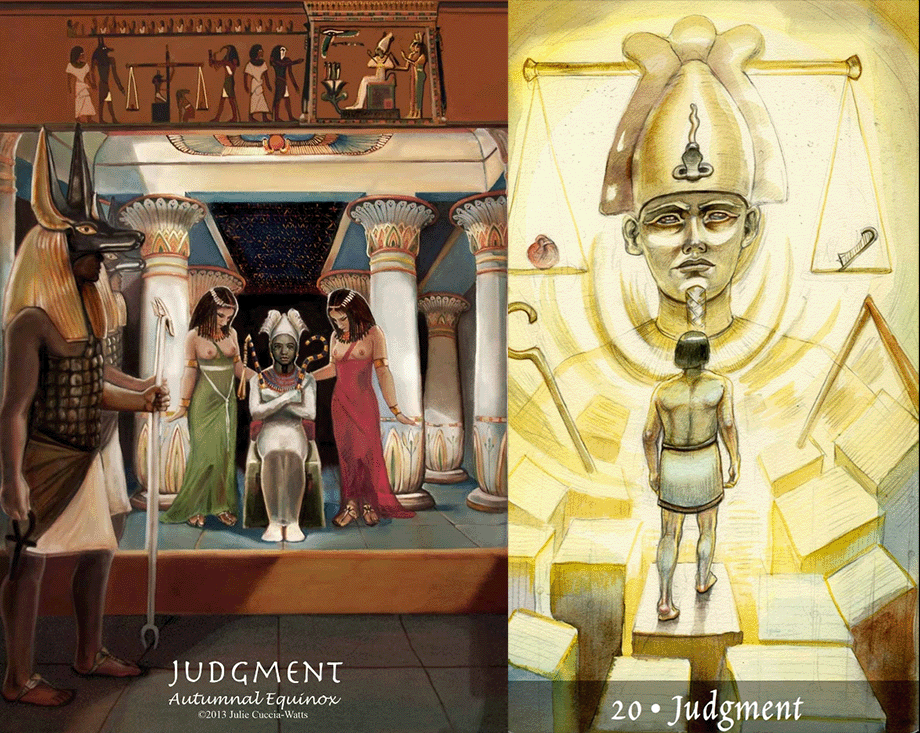
The idea of resurrection, or at least the afterlife, and the judgment of the soul, is an ancient thing. We know at least that in the Egyptian Book of the Dead, that if the heart of the dead person weighs more than the Feather of Ma’at – Cosmic Truth, then that heart was given to the Devourer of Souls and the person no longer existed.
From the earliest times, though, our remote ancestors seemed to regard the person as surviving the body. Grave goods are found even in Neanderthal sites. Whether these were made as offerings, the disposal of now taboo objects, or simply a human need to show affection for the dead, we cannot know. But that idea that there is something extra beyond the meat suit seems to be a realization of early peoples, and our sometimes neurotic obsession with it persists to the present day, in every culture. Even the atheist and rationalist who argue that our consciousness is a quirk of chemistry, and just as fragile and temporary, can only say so as a “matter of faith”. While they say that the existence of the soul cannot be proven scientifically, it also can’t be disproven. It’s all a matter of what we believe.
Card XX acknowledges our basic need to believe something, even if something is nothing. In other words. the message of this card is that there is more than we know going on. In that context, our actions may have consequences that we are not aware of. This is the very essence of the concept of karma.
I am not any expert on the teachings of the Hindu or Buddhist mystic. I have read various tracts in both religions, as I have read Hebrew, Christian, Mormon, and Islam works. The popular notion of karma seems to have evolved as a New Age oversimplification of the actual teachings, through a lens of Western dualism. The ideas of good and bad karma, are not necessarily coincident with “good” and “bad” as we tend to think of them in a post-Protestant first world way. That’s not to say there is not some overlap. But our tendency to equate “karma” with a kind of cosmic balancer is, as far as I can tell, not quite correct.
Karma comes from a society whose afterlife belief was reincarnation. We may suspect this is because of the caste system, which is apparently still very important in Indian society even in the 21st century, but the ideas are ancient, and may simply reflect a differing view of what happens when the meat suit stops working properly. Reincarnation is not exclusive to Hinduism, but it is one of the most widespread examples, and along with Buddhism, one of the belief systems that has explored it deeply both ritually and philosophically.
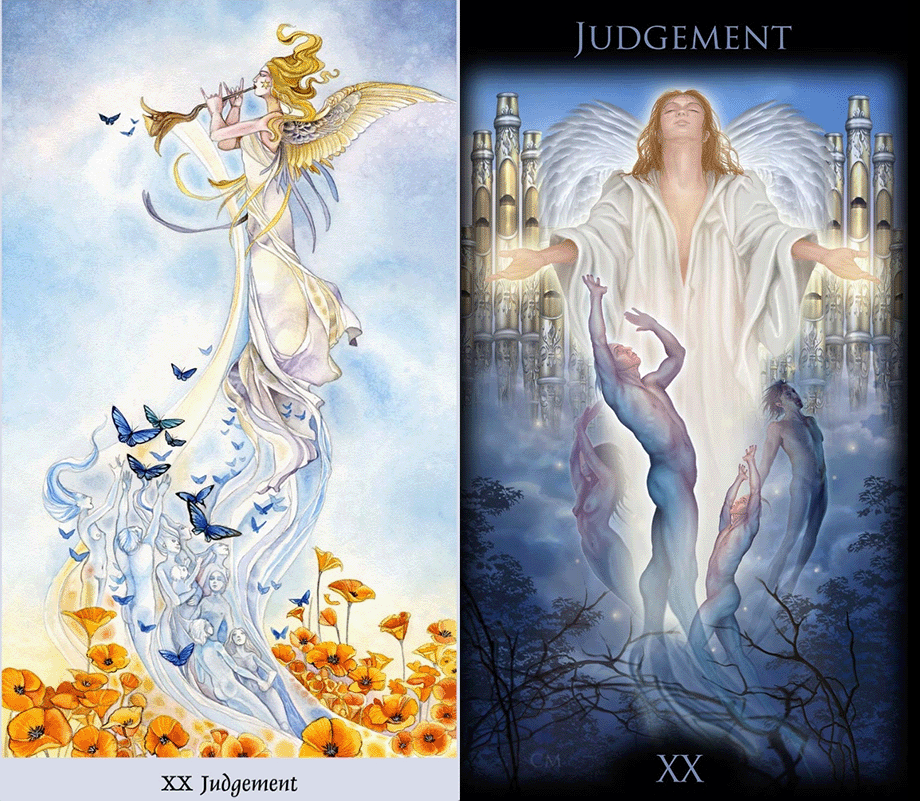
In the West, in the New Age, the idea of reincarnation quickly became more involved with having been someone prominent in a past life, rather than about what one would become in a future incarnation. Apparently most people were Cleopatra at some point. No wonder the poor woman had such a tragic life given all the people in her head. But there’s an entire branch of occult practice based around past life regressions and finding out who you were before you were you.
Now that is not to say there’s not value in that practice, if you believe in the idea of karma and reincarnation. Ultimately the goal of reincarnation is not to come back anymore. We keep coming back because we have failed to learn some vital lesson that will allow us to release our consciousness from this endless cycle of birth-suffering-death-rebirth and go on back to the source, which, is perhaps unconsciousness, or even, non-existence. So the idea that perhaps we can look back upon previous lifetimes and pinpoint where we went wrong – in order to avoid making the same mistakes in this life, and maybe future ones, is not without merit. So, maybe don’t get involved with invading foreign generals who are really just interested in rape and plunder. It never ends well.
Concepts like karmic debt and good karma and bad karma (and maybe instant karma) seem from my research to be largely Western adaptations to our already dualistic view of the cosmos. (If any of my readers are practicing a karmic religion and wish to correct me, I welcome it. As I said, I only know from research that may be faulty. I try my best, but I always want to truly understand). Karma is purely an expression of the need to be aware that our actions have consequences.
In the Christian (and ancient Egyptian) view of the afterlife, those consequences had a two-fold purpose. First, it was to cow behaviors that might otherwise be difficult or expensive to police. “If you breaketh this Commandment, thou shalt go directly to Hell. Thou shalt not pass go. Thou shalt not collect thy 200 sheckels”. Secondarily, it acted as an explanation for how those individuals who flagrantly and frequently shattered the commandments got little comeuppance, and in fact, appeared to profit mightily from it. If you are familiar with the history of the Church, you are aware that one of the issues at the heart of the Reformation was the sale of indulgences. That is, if one who profited from their sins might give some portion of the ill-gotten gains to building a new baptistry or chapel; and thereby shorten the time spent in the afterlife in Purgatory, waiting for a table to open up in Heaven. This “Get Out of Hell Free Card” was a key source of revenue for the expanding church, but they didn’t invent the idea. Ancient art is resplendent with temples and statues and stelae and obelisks given by the mighty and powerful who not only pleased their respective gods, but got a really nifty public relations boost.
New Age Tarot explorations of this card have obviously downplayed the Christian iconography used by Smith and Waite on this card. In Paul Huson’s Mystical Origins of the Tarot, this Last Judgement derives from same series of mystery pageant floats or stages as the Tower and some of the other more non-pagan symbols. I think he has a good argument here because it ties very well with the earlier forms of the next and final trump, the World. While we will delve more deeply into that card and it’s variants when I wrap up next week, it’s fair to say the original imaginings of the World card were also found in Revelations, and pertain to the aftermath of the events which we find displayed on this card.

By the time it reaches Levi, that version has moved toward a neo-pagan “Mother Earth”, and thus embraced by quasi-neo-pagan-reconstructionist-mystic-spiritualist-ceremonial-magicians who would ultimately give form to the RWS. Unfortunately that left Judgement twisting in the wind here with the Archangel Gabriel trumpeting the End Times to a bunch of folks who -by mid century – were really more interested in a self-centered, semi-hedonist, and in some ways anti-social kind of spiritual awakening. The New Age simply equated the card with the Dawning of the Age of Aquarius, and ignored the symbolism entirely.
But we can see this card as emblematic of personal awakening to the divine. Though Gabriel is frequently associated with the trumpet, and in Islam is identified as the giver of the Recitation to the Prophet, there are other candidates. The being identified as Metatron, personified as the “Word of God” also shows up in the Revelations. Described as proceeding from heaven on a white horse with a sword coming from his mouth that is the Word, with a name known only to himself, this being causes much of the violence and retribution of the prophecy. I know a number of Christian teaching equate him with Christ, and possibly also with Michael who is also often considered synonymous with Christ. Revelation, more than many of the other books, has a number of euphemisms and symbolic descriptions that, frankly, seem to be added for the sake of effect. There are a lot of things with multiple eyes, and horns, and wings, and a variety of horrific creatures that modern folks try to equate to weapons of war.
I’m fairly certain that the person or persons writing it were experiencing some kind of altered state of consciousness. Revelation is a hallucination, an ancient acid trip, or it’s an amazingly vivid dream. But those portions that are “special effects” would seem to indicate that whatever caused the experience was outside of that which anyone would easily express to another person.
So when approaching Card XX, I ponder the kind of transformative experience that leaves one forever different. This is not the Death that causes us to look for a rational alchemy in Temperance to deal with the new situation, nor is it the collapse of the external structure of the Tower which affords the opportunity to build new orders under the light of the Star. This leaves all the previous experiences behind. It is a change so profound to seem that before it one was dead, that the person who was, is not real, or relevant.
Such an experience may be overwhelming. The portent of such an experience, in a reading which centers on the mundane, the corporeal, and the worldly is jarring and incongruous. To try and integrate the message into the narrative of the other cards is difficult. Doubtless it’s easier to suggest it has something to do with making the proper choice, of being aware of karma, or even to demote it to the status of a simple positive outcome to a court case. But, excluding the last possible meaning assigned to this trump, a profound spiritual awakening is entangled with the perception of karma and the consequences of our choices. So in context, perhaps the card should be read as growing awareness of our own role in our fate, and our own responsibility for whatever else is going on.
With that, I will wrap up this week’s article and thank you for your continued patronage. I hope this series has been of benefit to you as you explore Tarot yourself. Next week is the World, the final trump, and I intend one last article to look back through the Major Arcana as a whole, before returning to a more or less eclectic editorial calendar. I hope you will join me.



